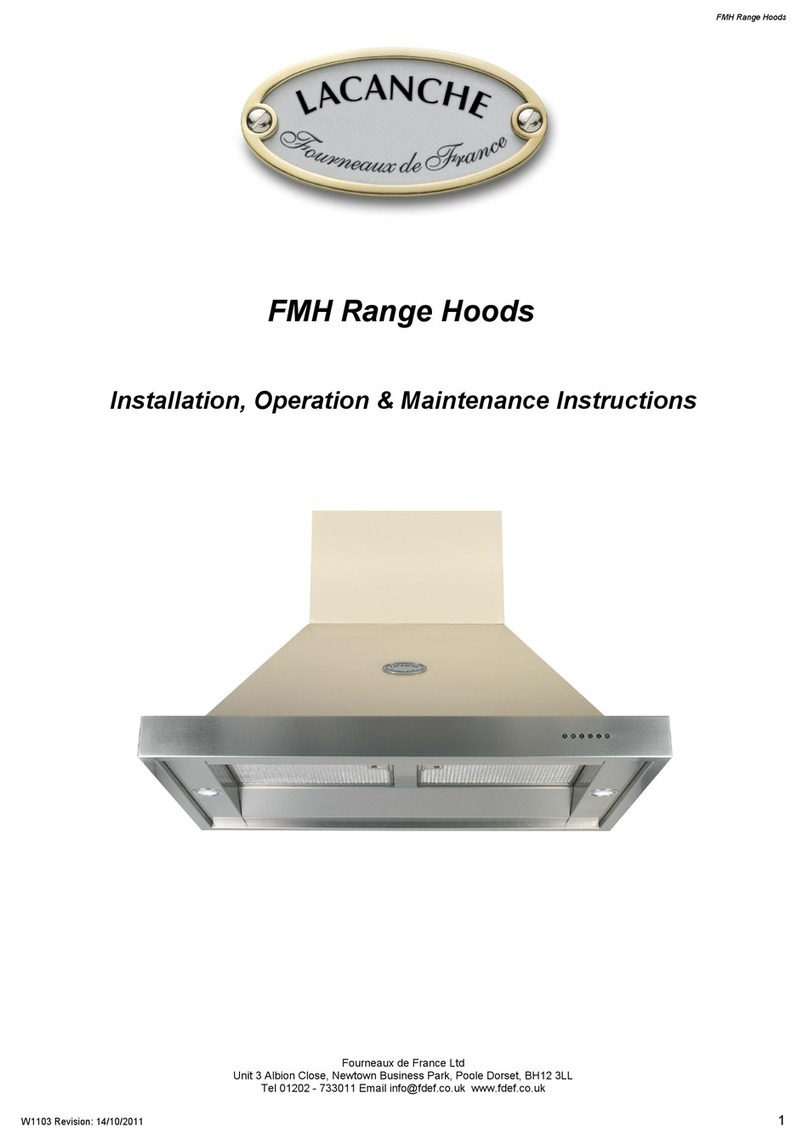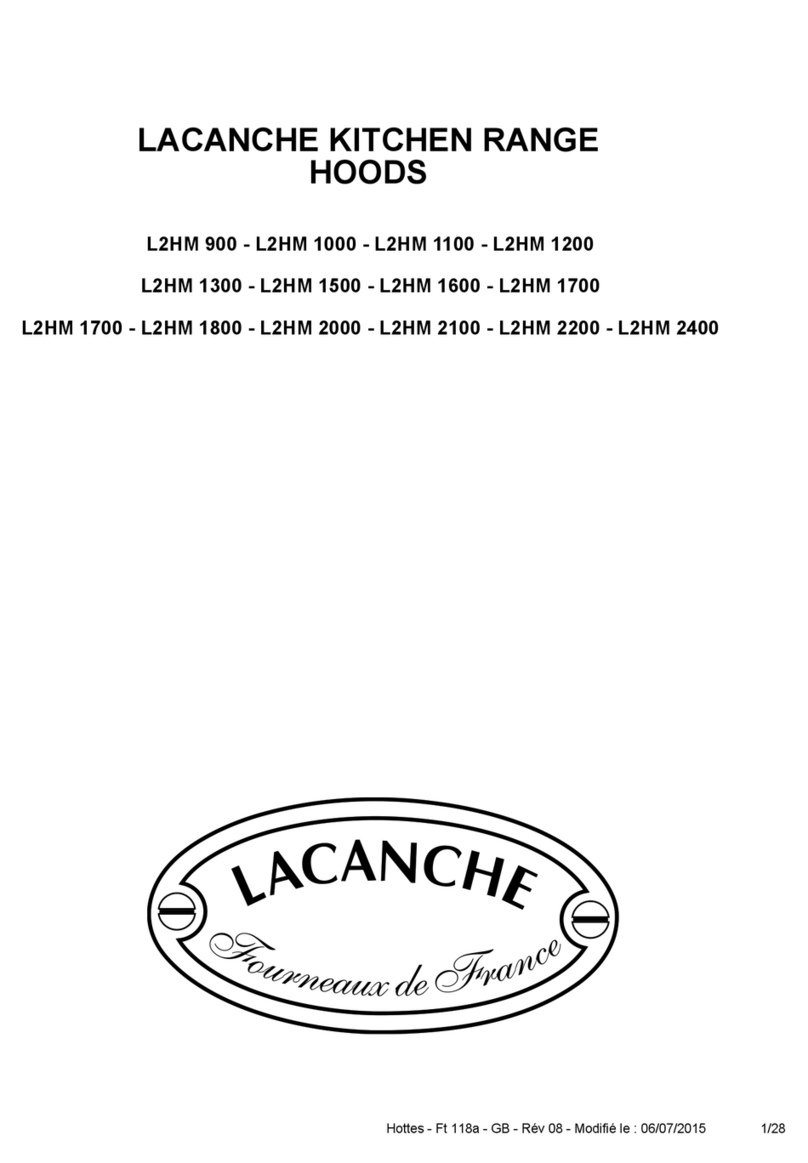
SECTION 3. IMPORTANT INFORMATION
The following minimum headroom is required to accommodate the cooker and
hood:
Min Cooker-to-hood clearance
Clearance with FdeF backsplash
Advice only: Clearance between
hood and ceiling:
Required ceiling height (min):
Rear Exit Spec
The minimum distance between the range hob burners and the bottom of the
extractor is essential to prevent overheating of the extractor and its components.
If you are fitting a Fourneaux backsplash then the cooker-to-hood clearance is
dictated by the backsplash height of 850mm excluding flanges
Please also note that a 90 degree bend in the flexible ducting will require 315mm
minimum headroom to give a smooth radius with no kinking.
The exhaust air must not be discharged into a flue which is used for exhausting
fumes from appliances supplied with energy other than electricity, e.g. oil or gas-
fired central heating boilers, gas-fired water heaters, etc.
Requirements of the relevant authorities concerning the discharge of exhaust air
must be complied with.
Adequate ventilation of the room must be provided when the cooker extractor and
appliances supplied with energy other than electricity (e.g. gas-fired or oil-fired
heaters, etc.) are used simultaneously. The room must be provided with vents to
allow a constant flow of fresh air.
Attention: This appliance requires an earth connection
Ensure that the supply voltage corresponds to that marked on the rating label
inside the extractor.
The extractor must be isolated from the electrical supply before carrying out any
cleaning or maintenance operations.
If the power supply cable is damaged, it must be replaced by the manufacturer,
its after-sales service, or a suitably qualified person.
Pay particular attention to fire risk when frying. To minimise the risk of fire, all
instructions relating to cleaning the grease filters and removing grease deposits
must be adhered to
Do not flambé under the extractor
The hood has been designed to remove the kitchen smells; any other additional
use shall be regarded as non-intended.
This appliance is not intended for use by person (including children) with reduced
physical, sensory, metal capabilities, or lack of experience and knowledge, unless
they have been given supervision or instruction concerning use of the appliance
by a person responsible for their safety.
This appliance is for domestic use only.































